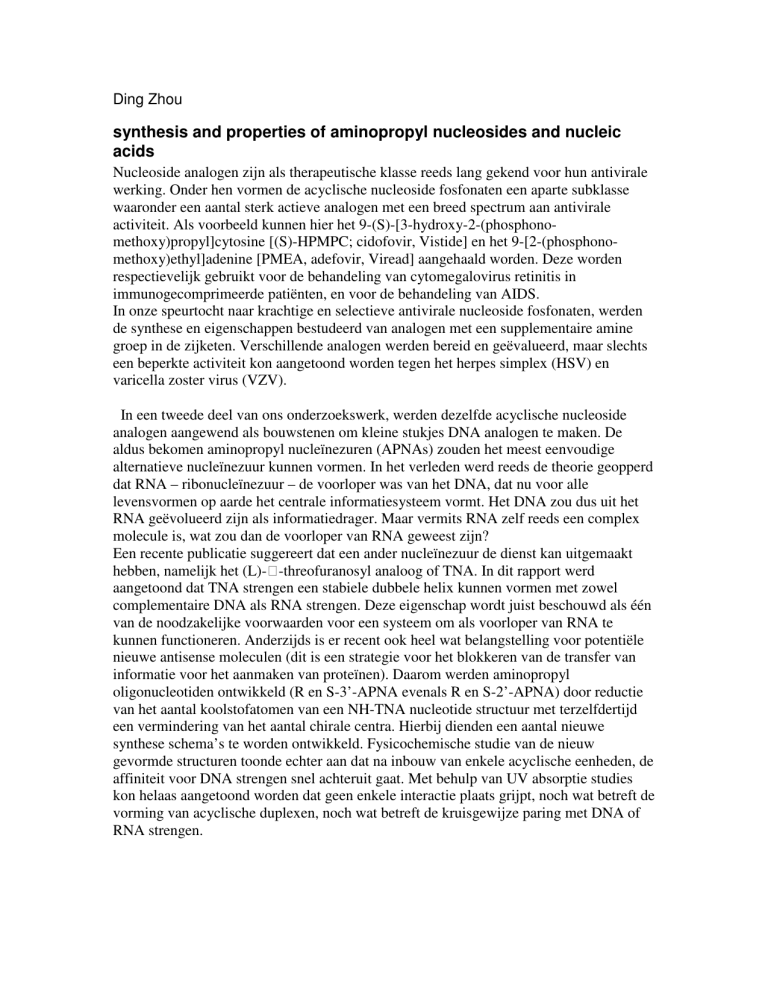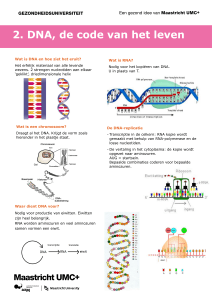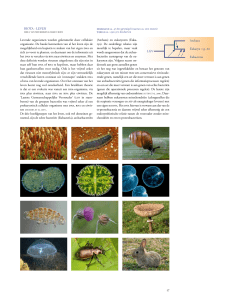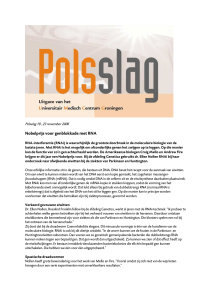
Ding Zhou
synthesis and properties of aminopropyl nucleosides and nucleic
acids
Nucleoside analogen zijn als therapeutische klasse reeds lang gekend voor hun antivirale
werking. Onder hen vormen de acyclische nucleoside fosfonaten een aparte subklasse
waaronder een aantal sterk actieve analogen met een breed spectrum aan antivirale
activiteit. Als voorbeeld kunnen hier het 9-(S)-[3-hydroxy-2-(phosphonomethoxy)propyl]cytosine [(S)-HPMPC; cidofovir, Vistide] en het 9-[2-(phosphonomethoxy)ethyl]adenine [PMEA, adefovir, Viread] aangehaald worden. Deze worden
respectievelijk gebruikt voor de behandeling van cytomegalovirus retinitis in
immunogecomprimeerde patiënten, en voor de behandeling van AIDS.
In onze speurtocht naar krachtige en selectieve antivirale nucleoside fosfonaten, werden
de synthese en eigenschappen bestudeerd van analogen met een supplementaire amine
groep in de zijketen. Verschillende analogen werden bereid en geëvalueerd, maar slechts
een beperkte activiteit kon aangetoond worden tegen het herpes simplex (HSV) en
varicella zoster virus (VZV).
In een tweede deel van ons onderzoekswerk, werden dezelfde acyclische nucleoside
analogen aangewend als bouwstenen om kleine stukjes DNA analogen te maken. De
aldus bekomen aminopropyl nucleïnezuren (APNAs) zouden het meest eenvoudige
alternatieve nucleïnezuur kunnen vormen. In het verleden werd reeds de theorie geopperd
dat RNA – ribonucleïnezuur – de voorloper was van het DNA, dat nu voor alle
levensvormen op aarde het centrale informatiesysteem vormt. Het DNA zou dus uit het
RNA geëvolueerd zijn als informatiedrager. Maar vermits RNA zelf reeds een complex
molecule is, wat zou dan de voorloper van RNA geweest zijn?
Een recente publicatie suggereert dat een ander nucleïnezuur de dienst kan uitgemaakt
hebben, namelijk het (L)- -threofuranosyl analoog of TNA. In dit rapport werd
aangetoond dat TNA strengen een stabiele dubbele helix kunnen vormen met zowel
complementaire DNA als RNA strengen. Deze eigenschap wordt juist beschouwd als één
van de noodzakelijke voorwaarden voor een systeem om als voorloper van RNA te
kunnen functioneren. Anderzijds is er recent ook heel wat belangstelling voor potentiële
nieuwe antisense moleculen (dit is een strategie voor het blokkeren van de transfer van
informatie voor het aanmaken van proteïnen). Daarom werden aminopropyl
oligonucleotiden ontwikkeld (R en S-3’-APNA evenals R en S-2’-APNA) door reductie
van het aantal koolstofatomen van een NH-TNA nucleotide structuur met terzelfdertijd
een vermindering van het aantal chirale centra. Hierbij dienden een aantal nieuwe
synthese schema’s te worden ontwikkeld. Fysicochemische studie van de nieuw
gevormde structuren toonde echter aan dat na inbouw van enkele acyclische eenheden, de
affiniteit voor DNA strengen snel achteruit gaat. Met behulp van UV absorptie studies
kon helaas aangetoond worden dat geen enkele interactie plaats grijpt, noch wat betreft de
vorming van acyclische duplexen, noch wat betreft de kruisgewijze paring met DNA of
RNA strengen.
Nucleoside analogs are known as antivirals already for a long time. Among them, the
acyclic nucleoside phosphonates are a class of highly effective nucleotide analogs with
broad spectrum antiviral activity. Prime examples are 9-(S)-[3-hydroxy-2-(phosphonomethoxy)propyl]cytosine [(S)-HPMPC; cidofovir, Vistide] and 9-[2-(phosphonomethoxy)ethyl]adenine [PMEA, adefovir, Viread]. These are used for the treatment of
human cytomegalovirus retinitis in immunocompromised patients, and for the treatment
of AIDS, respectively. In search for potent and selective antiviral nucleoside
phosphonates, we decided to study the synthesis and properties of compounds bearing in
the side-chain amino groups in addition to the hydroxyl functionalities with either purine
or pyrimidine bases. Several compounds were evaluated but only a few displayed
marginal activity against HSV and VZV. Replacement of the oxygen atom in the acyclic
chain of HPMPC with a nitrogen functionality thus results in a large reduction in
biological activity.
In a second part of our work, these same new nucleoside analogs were used in an effort to
obtain the simplest nucleic acid alternative: aminopropyl nucleic acids (APNAs).
Scientists have put forth the theory that RNA - ribonucleic acid - was the predecessor to
DNA, which actually is the central information storage for life on earth. In this view,
RNA therefore has evolved into DNA. But as RNA itself is very complex, what is the
ancestor then of RNA?
One recent report suggests that it may have been another nucleic acid called (L)- threofuranosyl oligonucleotides, also known as TNA. They found that complementary
TNA strands can form stable double helices and also pair up with complementary strands
of both RNA and DNA. This ability is thought to be one of the requirements of any
system that would be considered a possible ancestor of RNA. The current interest in
potential antisense reagents (which is a strategy to block information transfer) prompted
us to design some new members of aminopropyl nucleosides (R or S-3’ -APNA and R or
S-2’ -APNA) by reducing the number of carbon atoms in a NH-TNA nucleotide structure
with concomitant reduction of the number of chiral centers. Hereto, some new synthetic
strategies were developed. However, the study of the effect of consecutive acyclic
building blocks in homothymidine polymers showed that their incorporation decreased
the stability of the duplex with complementary DNA. Unfortunately, no interactions (as
measured by hypochromicity studies) could be detected by thermal denaturation
experiments, neither for self-pairing, homochiral pairing nor cross-pairing with DNA or
RNA, due to self-aggregation or rearrangement.











